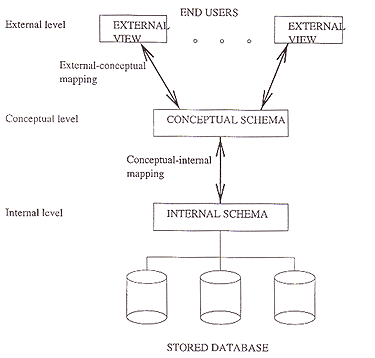| (a) | Describe the DBMS architecture known as the three-schema architecture. Your answer should include descriptions of each level of architecture (3 marks for each level), as well as a diagram. (3 marks). | [12] |
External level
Conceptual level
Internal rules
|
||
| (b) | (i) What is data independence? (ii) In the three-schema architecture, define the two forms of data independence, and explain which parts of the architecture make these two forms possible. |
[6] |
| (i) Data definitions
are separated from applications, they are independent of each other. (ii) Physical data independence: any change
made in the internal level does not require an associated change at the conceptual level
and the external level. External-conceptual mapping makes logical data independence possible.
|
